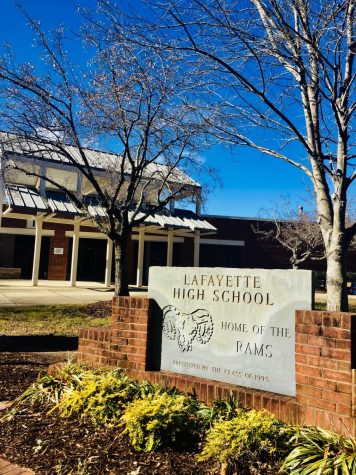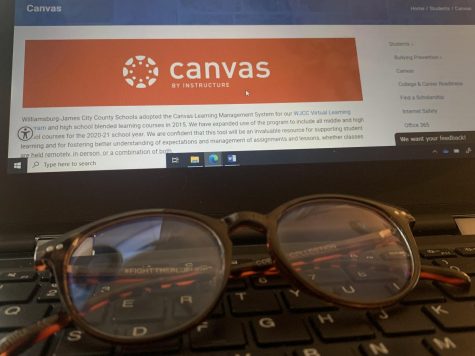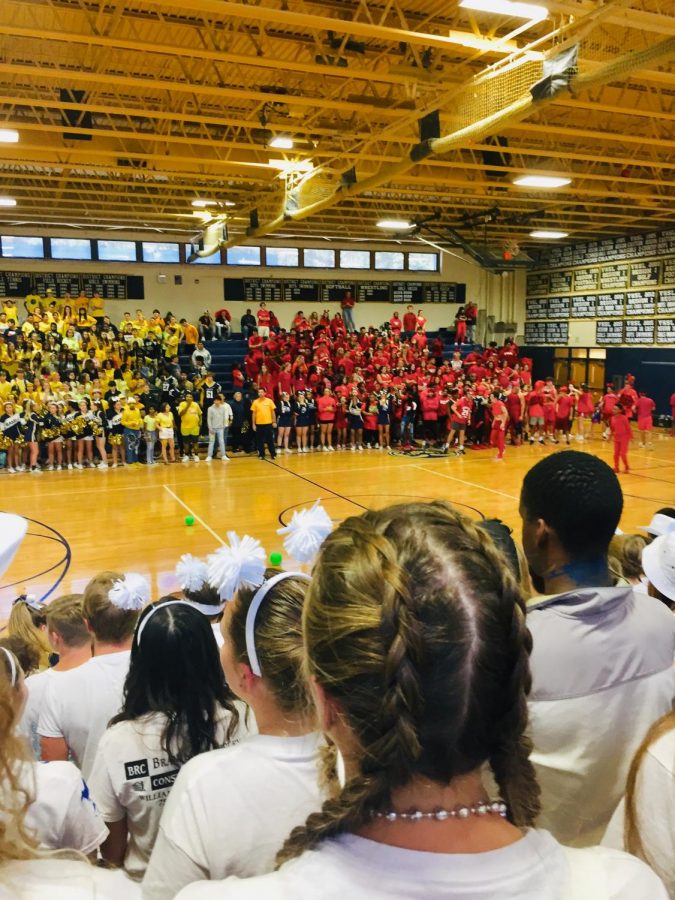A Look to the Uncertain Future of School Reopenings
As Virginia gears up to have students back in the classroom what is learning going to look like in a COVID world?
With no precedent of how to move forward schools are looking on how to adapt to the new normal of a post covid worls.
Early this January, long-held frustrations finally boiled over as Williamsburg parents took to the streets to protest WJCC schools’ continued decisions to delay a return to school. Many citizens have cited grievances against virtual learning, encouraging schools to open for the sake of both parents and students alike. But either decision is a double-edged sword: with COVID cases continually rising, the stability of in-person education would also hold an incredible risk of spreading the virus to teachers, students, and their families.
However, a new factor has been added to the turmoil. As Virginia moved into phase 1b of vaccine distribution, more and more teachers began to receive their COVID vaccinations. With this in mind, WJCC schools’ current plan to reopen is set at a gradual return of students over the course of February and March, with all grades having returned by March 8th. Students would be in class for two days a week, continuing to work virtually for the remainder of the week, and would have the option to continue entirely virtually if needed. We interviewed an anonymous WJCC teacher to give her thoughts on the different options. “Once teachers have been given opportunities to get both shots, I will be delighted to see students again,” she said. “We sincerely miss them. It has been a very long, long time of teaching to an empty classroom, and I look forward to students experiencing school again.” She added that although teaching always carries risk, the vaccination of teachers “considerably increased (her) comfort level,” and that she felt following COVID safety procedures would ensure the safety of staff and students.

We also spoke to her about the other side of the story: students who chose to opt out of the return and remain online for the next marking period. She states that students and parents were welcome to choose whatever option was safest for their family, citing her confidence in her students. “We have been using computers in classrooms for quite a while, and we have used all sorts of apps where students give input through their devices and monitor a classroom screen, so from the student side, I think students are prepared to handle the hybrid model. It’s worth mentioning that some students are doing quite well with at-home learning and benefit from this format. With this system, there will be a gradual transition and families can do what is best for them. We will be available to support all students whichever path they choose.” Upon being asked about possible year-round schooling, she expressed that she had not heard it being talked about much, but offered her support. “The current system was designed back when students were needed to work on farms during the summer, and it is anachronistic. Too many students experience a summer slump. Students could have a shorter summer break, keep their progress, and have different short breaks during the year. This would be a great time to reboot and make that the new normal.”
Lastly, we asked her about the aforementioned parent protests for a sooner return. As a parent herself, she had a lot to say about the issue, agreeing that she understood the concerns of both sides and sympathized with the families, but ultimately, the question of safety was always most important. “As a parent, safety is always my top priority and children have different abilities to stay safe,” she said. “Parents need to make their children understand at their level that they are an active part in keeping everyone healthy.” Even so, this teacher expressed considerable hope that students will continue to learn safely in whatever environments they are given: “Thinking broadly about learning enables us to see that these previously unthinkable ways of learning that we have adapted to will almost certainly serve us well in the future. Learning can and will continue, and the formats will continue to evolve, hopefully in environments that feel more safe and comfortable.”

While many students, parents, and teachers are patiently waiting for schools to reopen, many have chosen to seek out alternative means of learning. Private schools and homeschooling have now been increasingly looked at as a possible avenue to continue education in a more normal environment. Homeschooling co-ops have been increasing in popularity and are an appealing alternative to student who want to be in a classroom setting without the hefty private school price tag. Grace McGonagall, a member of a home school co-op here in Williamsburg, has a first hand account of the changes happening in alternative learning environments as well as what it’s been life for her throughout the pandemic. “The way I always describe a co-op is picture a church where the space is rented out twice a week and filled with 100 homeschooled families from kindergarten to 12th grade. That’s basically what it is, it’s a bunch of moms and also licensed educators coming together to offer their different skill sets to kids in Virginia. It’s a very intimate learning environment.” When asked if she has seen an increase in attendance Grace responded, “Oh yes, yes, yes. I’m on the student government and we were a hosting like a welcome WCA (Williamsburg Classical Academy) Day and I kept seeing like people from my rowing team who I know were public schoolers or private schoolers showing up to our orientation day and I ask, ‘What are you guys doing here?’ and they said, ‘We just don’t feel comfortable in the public schools so we’re coming to you.’ So we have had like 50 new families this year which is a lot for us.”
However, homeschool co-ops may get some relief as schools begin to reopen for in-person learning. In early January of this year, Governor Northam discussed the possibility of yearlong school to make up for lost learning during the pandemic. A month later, in a call with superintendents from across the state, Northam urged schools to facilitate some in-person learning by March 15th. The governor has emphasized that in-person learning will look different depending on the school division, stating that plans “could include extensive summer classes, remediation, additional instructional time, or even year-round schooling.”
We talked with the assistant principal of our school, Dr. McFarland-Bryant, to discuss what post-COVID education might look like for Lafayette. “Personally, I think COVID-19 has given us a new definition of normal.” Said Dr. Bryant, “I hope that school does not ever return to the ‘normal’ that is was pre COVID-19 as the introduction of virtual teaching and learning tools have elevated education past the paper and pencil model. With the virtual model, more collaboration is possible. Teaching and learning no longer has to occur within the four walls of a classroom.”
Dr. Bryant, like many students and teachers, has had to adapt to the virtual realm when going about her day-to-day tasks. Instead of in-person meetings and physically visiting classrooms, she has done so on Zoom. In addition to assisting students, parents, and staff virtually, she has adjusted to working at a new school during a pandemic. “My transition to Lafayette High School was smooth. Having come from New Horizons I have had the opportunity to work with some Lafayette students in the past. I am definitely looking forward to students returning to the building. Learning the staff’s names with masks on has been a feat. I just hope if we ever return to the point of no masks that I will be able to identify everyone. Additionally, the staff at LHS has been phenomenally welcoming. They have been nothing short of kind and accommodating since I arrived.”
Along with supporting students at Lafayette, Dr. Bryant has been helping her own kids through online school. She says it has been a learning curve both her children and herself, but through patience and communication with teachers, they have created a routine that fits them. “I have adopted a ‘we are all in this together’ mentality. Because I have children who are grade school age and virtually learning I feel like I can relate to our families. I am able to celebrate, provide encouragement, provide a sense of understanding, and sometimes even just a listening ear.”
Needless to say, virtual learning has been an adjustment for everyone. For students, the transition to different methods of learning has exposed some disparities. Dr. Bryant described how, depending on the type of learner, online school has caused some to struggle and others to grow. “Virtually instruction has compartmentalized teaching and learning. Some students (typically visual and auditory learners) are thriving with virtual instruction. While some students (kinesthetic learners) are having more difficulty virtually learning than with in-person learning.” For Lafayette students, Dr. Bryant stated that “the continued implementation of digital resources” and “various virtual instructional strategies, techniques, and student support offerings” will help those who are struggling with the format and methods of online school.

On the topic of yearlong school, Dr. Bryant stated the plan “could be viable to assist students who may need additional support educationally and prevent learning loss during the summer months”. However, she also stressed the importance of getting student, parent, teacher, and staff input on the topic. Additionally, Dr. Bryant pointed out that some students are thriving on online school and may not need more support over the summer. But no matter how the return to in-person works out for Lafayette, there are bound to be some struggles and adjustments. For both students and staff, waking up earlier for school will certainly be hard. Dr. Bryant thinks that reconnecting, while also social distancing, will be the most difficult. “The largest struggle we are going to have to face is students reconnecting with their peers and remembering to wear their masks, and socially distance. Students have been out of school for so long, they are going to be excited to reconnect with their friends and their teachers. I think we just have to remember that for now at least, there is a new norm. Children are resilient, and I think that once in the building they will continue to learn as they have throughout the pandemic.”




